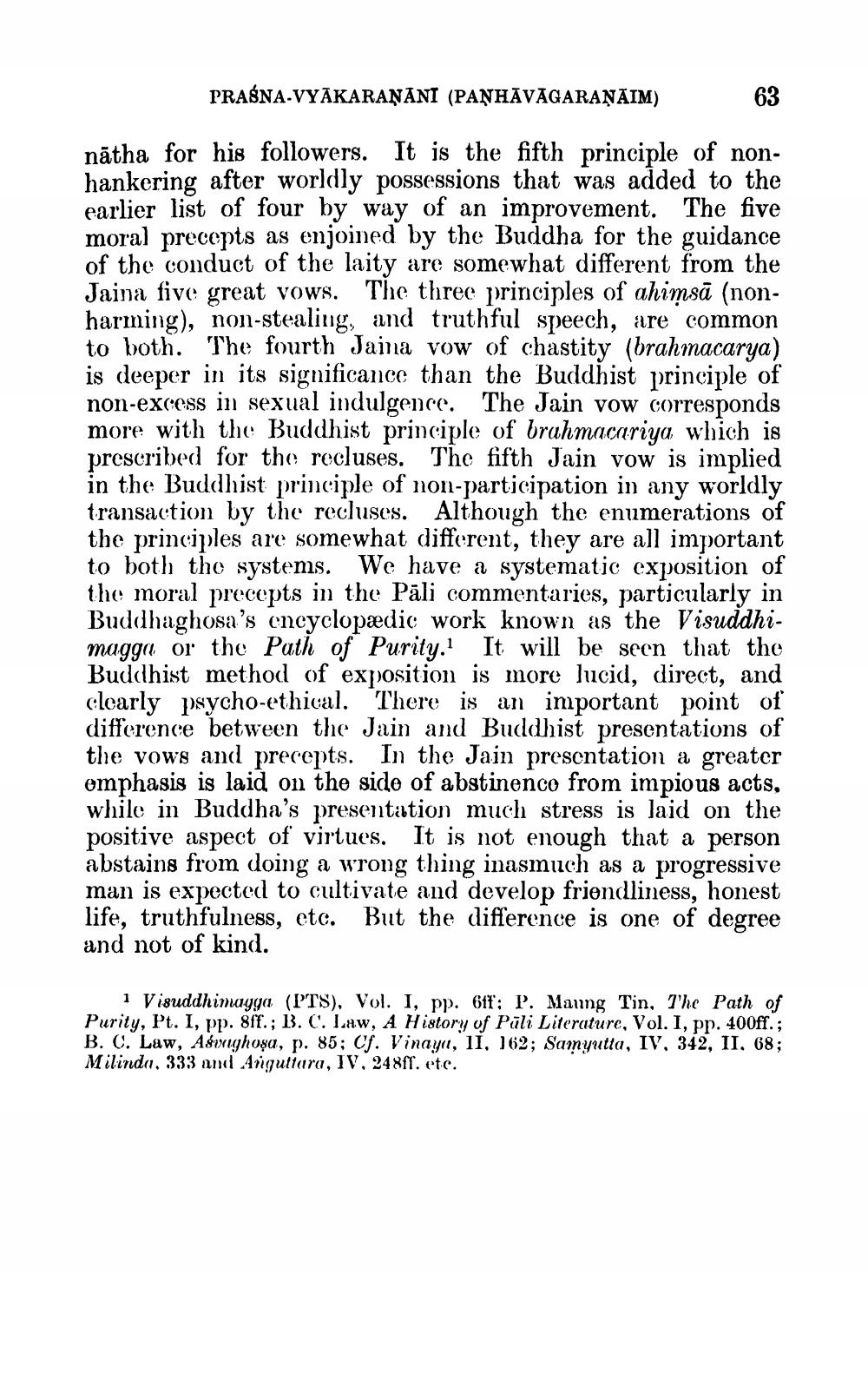________________
PRASNA-VYAKARANANI (PANHĀVĀGARAṆAIM)
63
natha for his followers. It is the fifth principle of nonhankering after worldly possessions that was added to the earlier list of four by way of an improvement. The five moral precepts as enjoined by the Buddha for the guidance of the conduct of the laity are somewhat different from the Jaina five great vows. The three principles of ahimsā (nonharming), non-stealing, and truthful speech, are common to both. The fourth Jaina vow of chastity (brahmacarya) is deeper in its significance than the Buddhist principle of non-excess in sexual indulgence. The Jain vow corresponds more with the Buddhist principle of brahmacariya which is prescribed for the recluses. The fifth Jain vow is implied in the Buddhist principle of non-participation in any worldly transaction by the recluses. Although the enumerations of the principles are somewhat different, they are all important to both the systems. We have a systematic exposition of the moral precepts in the Pali commentaries, particularly in Buddhaghosa's encyclopædic work known as the Visuddhimagga or the Path of Purity. It will be seen that the Buddhist method of exposition is more lucid, direct, and clearly psycho-ethical. There is an important point of difference between the Jain and Buddhist presentations of the vows and precepts. In the Jain presentation a greater emphasis is laid on the side of abstinence from impious acts. while in Buddha's presentation much stress is laid on the positive aspect of virtues. It is not enough that a person abstains from doing a wrong thing inasmuch as a progressive man is expected to cultivate and develop friendliness, honest life, truthfulness, etc. But the difference one of degree and not of kind.
1 Visuddhimayga (PTS), Vol. I, pp. 6ff: P. Maung Tin, The Path of Purity, Pt. I, pp. 8ff.; B. C. Law, A History of Puli Literature, Vol. I, pp. 400ff.; B. C. Law, Asvaghosa, p. 85; Cf. Vinaya, II, 162; Samyutta, IV, 342, II. 68; Milinda, 333 and Anguttara, IV, 248ff. etc.




